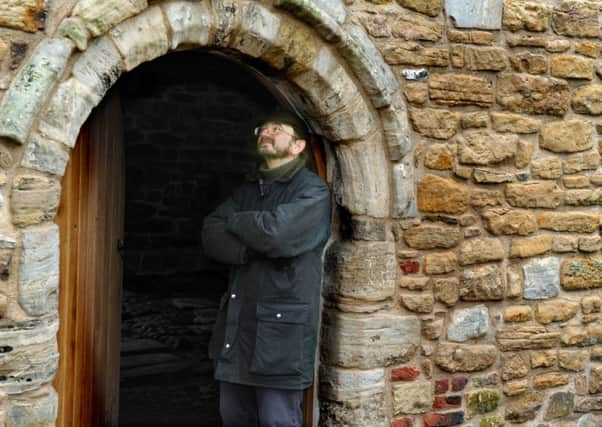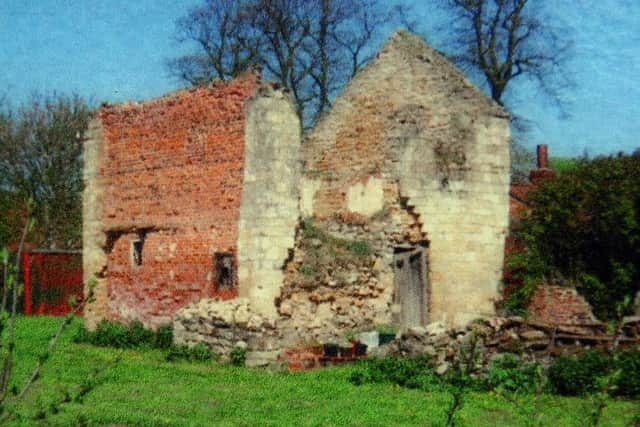Risk over as couple rescue heritage from ruin


The building, near Goole, has been a much-loved local building for many years but the ravages of the elements and the passage of time had left it uninhabitable and it had fallen out of use.
As a result it was placed on English Heritage’s list of buildings at risk.
Advertisement
Hide AdAdvertisement
Hide AdBut now thanks to the dedication of its owners, who secured a £90,000 grant from English Heritage, the Adlingfleet rectory has been taken off the register.


The rectory was originally built by John le Franceys, who was once a rector of Adlingfleet and a King’s councillor. In the mid 13th century le Franceys ordered the demolition of the nearby Whitgift church, carrying off the stones of the sanctuary to build himself a chamber in the Adlingfleet rectory complex.
The rectory, at Manor Road, Adlingfleet includes a doorway that dates from the 12th century.
It was bought by the current owners, Tim and Amanda Harding in 1996, who stabilised the building to stop it decaying but couldn’t afford to do the repairs that were desperately needed to bring the building back into use.
Advertisement
Hide AdAdvertisement
Hide AdNow, thanks to the grant from English Heritage, the rectory, which is protected as a scheduled monument and listed at grade II*, has been made weather-tight and useable for the first time in 40 years. Thanks to the investment existing parts of the structure, including walls and timbers, have been repaired and a new timber first floor and roof have been added.
Mrs Harding said: “We’re very grateful for the grant from English Heritage. The building had been pretty stable for around 15 years, but the extreme weather of the last few years really took its toll, and its condition deteriorated.
“We have cleared it out several times but we couldn’t do all the work without the grant.
“Now the building has been totally transformed and it’s amazing.
Advertisement
Hide AdAdvertisement
Hide Ad“This village is very small and apart from the church there isn’t a community building, so we may be able to use the rectory for some village events and possibly even as a polling station.”
The rectory remains privately owned by the Hardings but they plan to open it to the public, by appointment, later in the year.
They also hope to learn some of the traditional craft skills required to keep the building weathertight so that they can carry out future repairs themselves, and have already practiced pointing with traditional lime mortar which helps old stone walls cope with moisture and movement.
Keith Emerick, inspector of ancient monuments in the English Heritage Yorkshire team, said: “The rectory is a fascinating building that had reached a sad and desperate state through no fault of the current owners who are incredibly passionate about it.
Advertisement
Hide AdAdvertisement
Hide Ad“We added it to our Heritage at Risk Register – which identifies the most vulnerable important historic buildings up and down the country, and now we are delighted to have been able to work with the Hardings to bring this building back to life.”
In 2013, a report by English Heritage, found there were 96 buildings grade I and grade II* listed, excluding places of worship, on the “at risk” register in Yorkshire.
Eight buildings had been removed from the 2012 register because their futures had been secured but 11 had been added.
Of the 519 listed places of worship assessed in Yorkshire, 71 were on the register. However, 14 places of worship were removed from the 2012 register following repair work.
Advertisement
Hide AdAdvertisement
Hide AdTrevor Mitchell, the planning and conservation director in Yorkshire, said in the report: “The good news is that we are on target to save 25 per cent (1,137) of the sites that were on the register in 2010 by 2015.
“From the historic battlefield at Towton to ancient barrows on the Wolds, this success is down to good partnerships with owners, developers, the Heritage Lottery Fund, Natural England, councils and local groups.
“It will be increasingly important to build on these partnerships to achieve the overall aim of reducing the number of sites on the register.”
The rectory saw use as an agricultural building in the 18th century, a stable and barn in the 19th century and even as a smithy when a lean-to was added to its side as a shelter for the local blacksmith. It is still possible to see the reset 12th century arch that was incorporated into the new chamber building.
The project was started with an £8,000 European Leader grant, and the repairs completed with a £90,000 grant from English Heritage, along with contributions from the building’s owners.